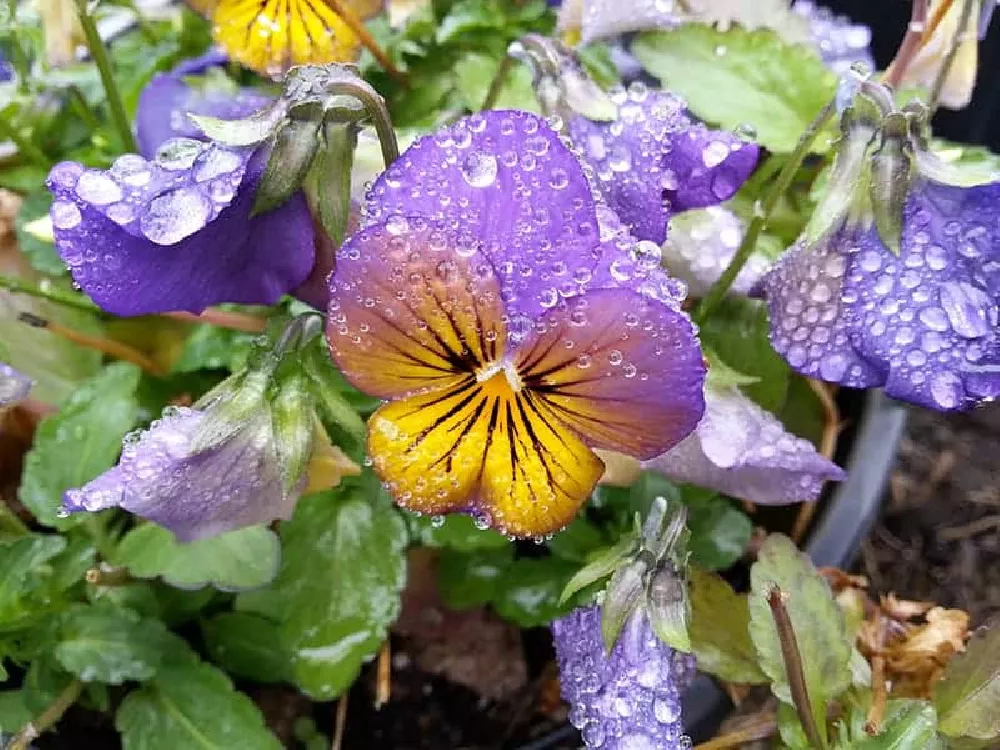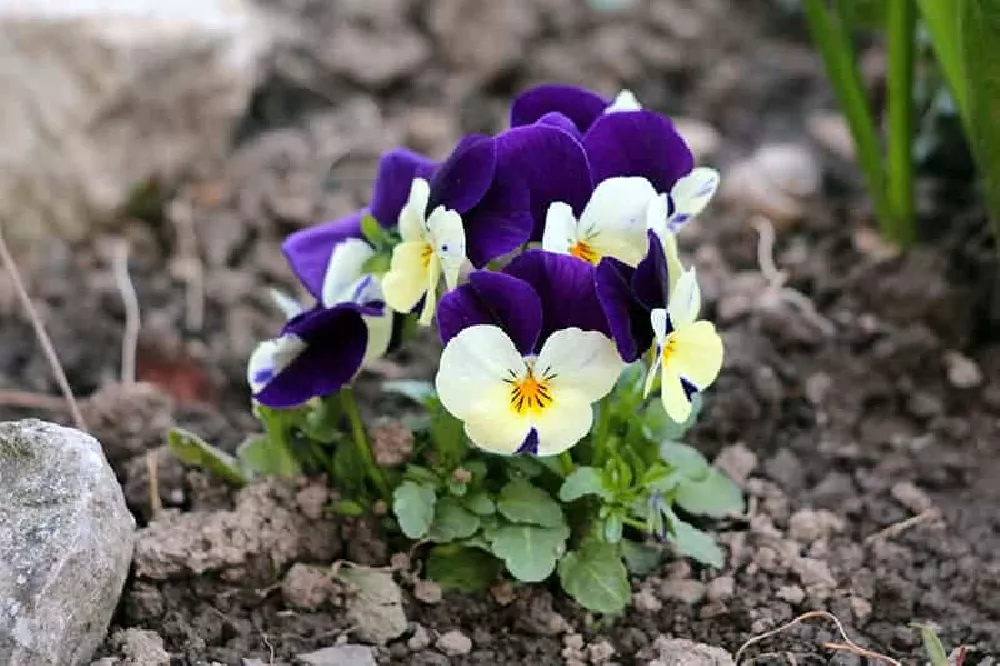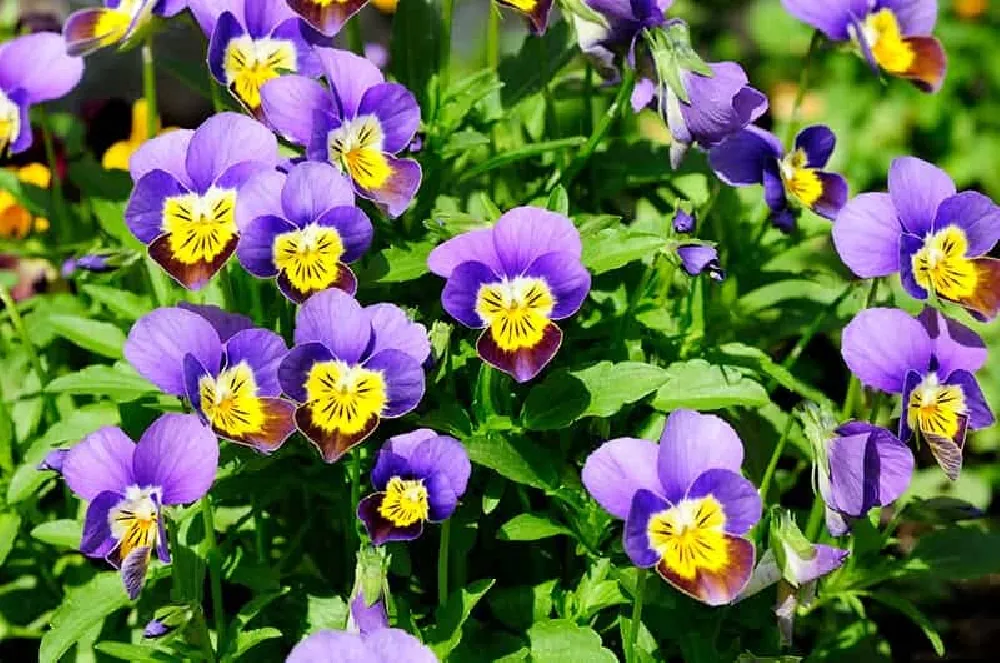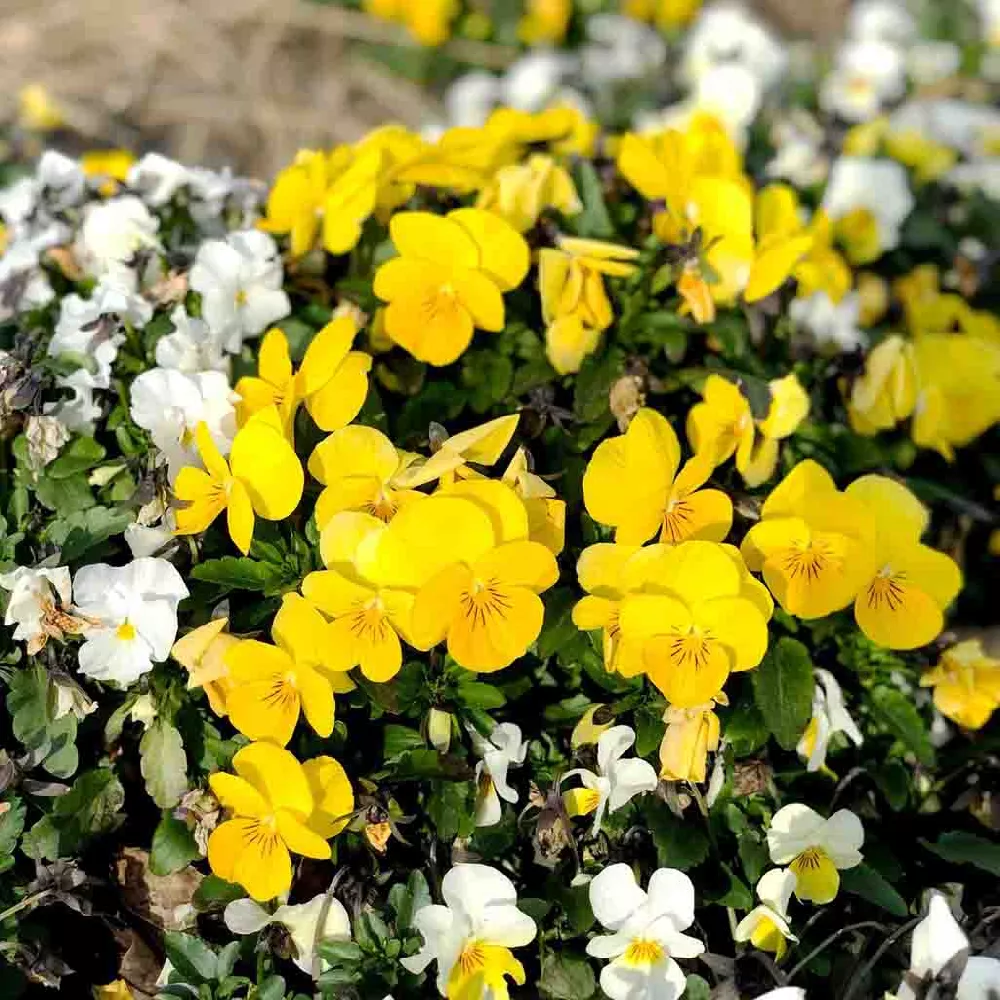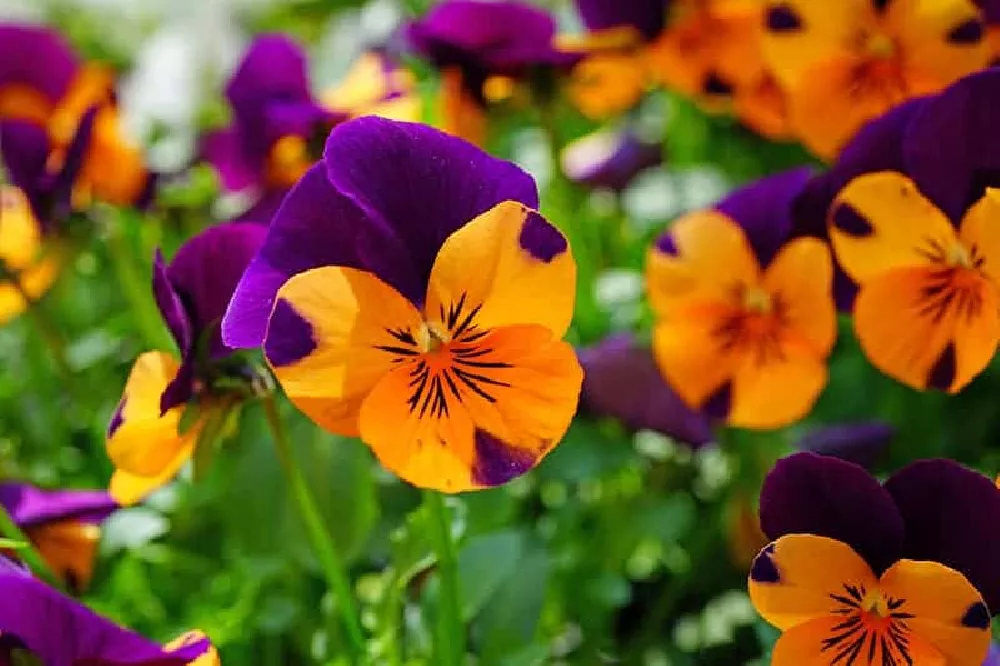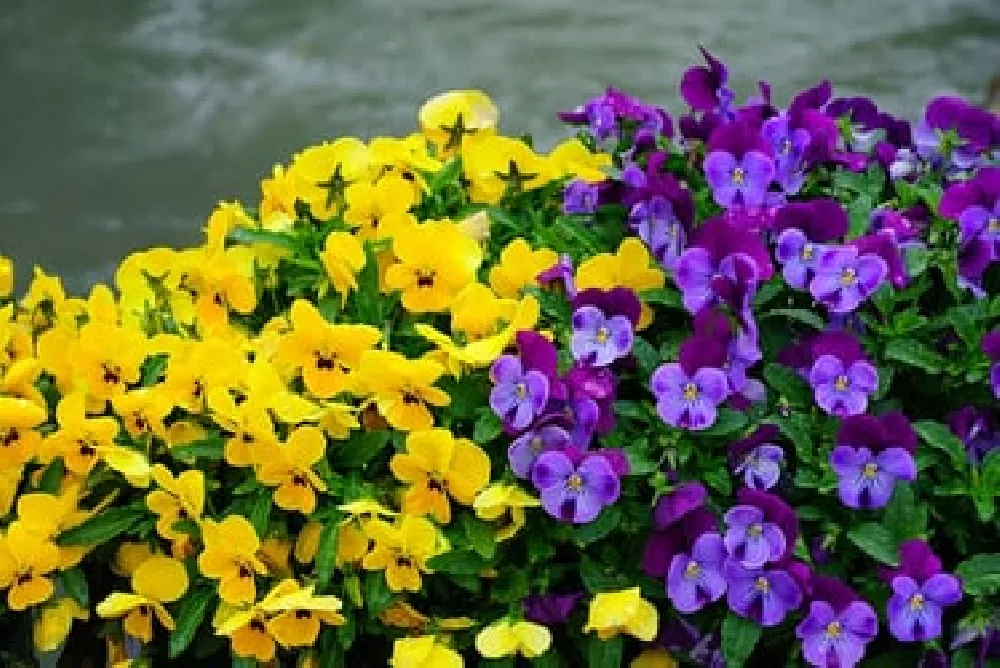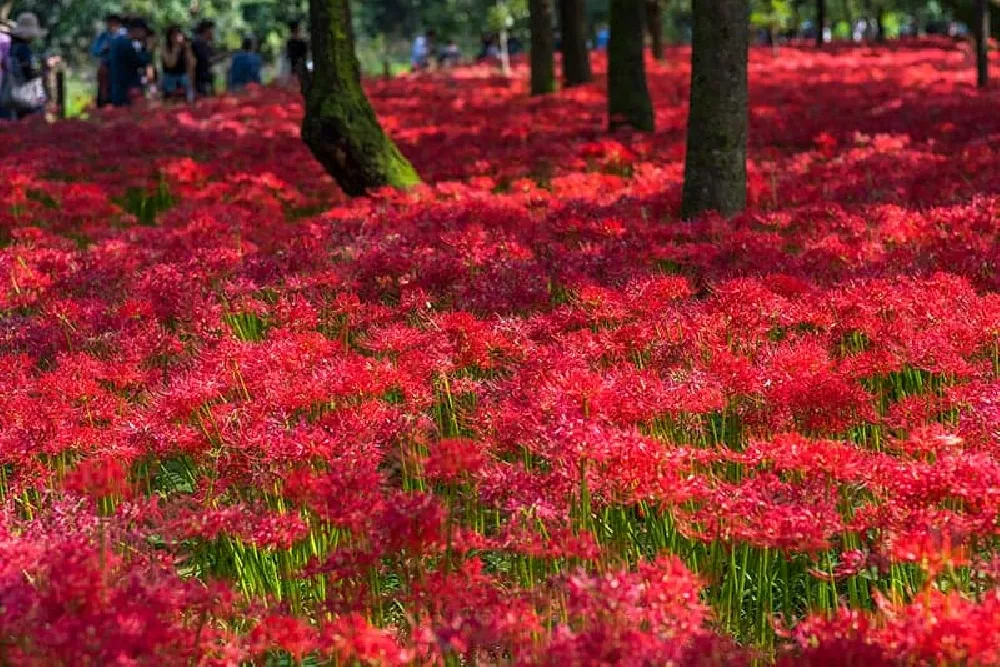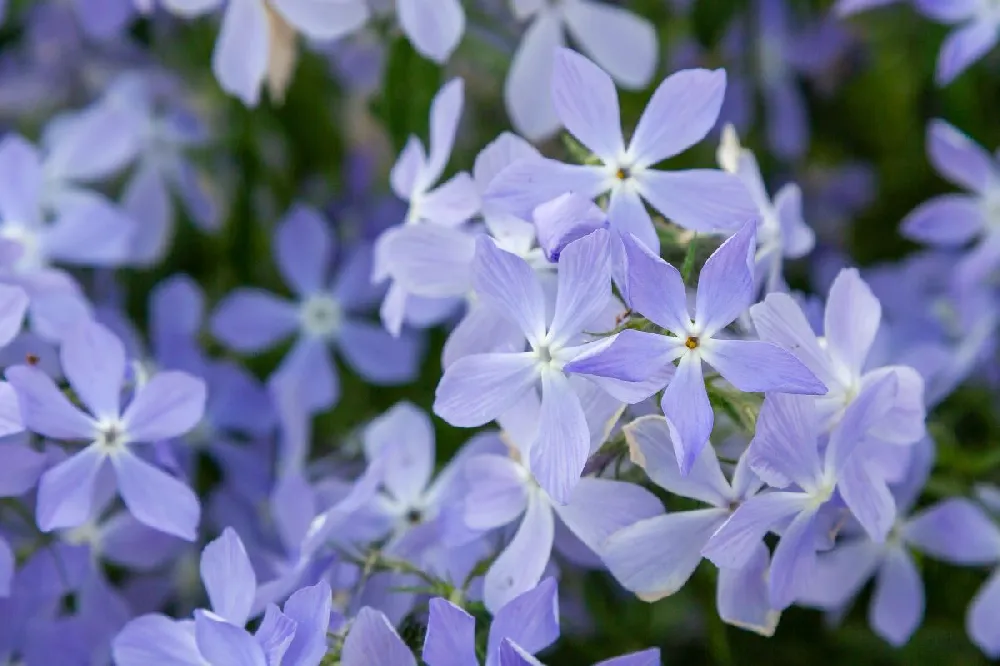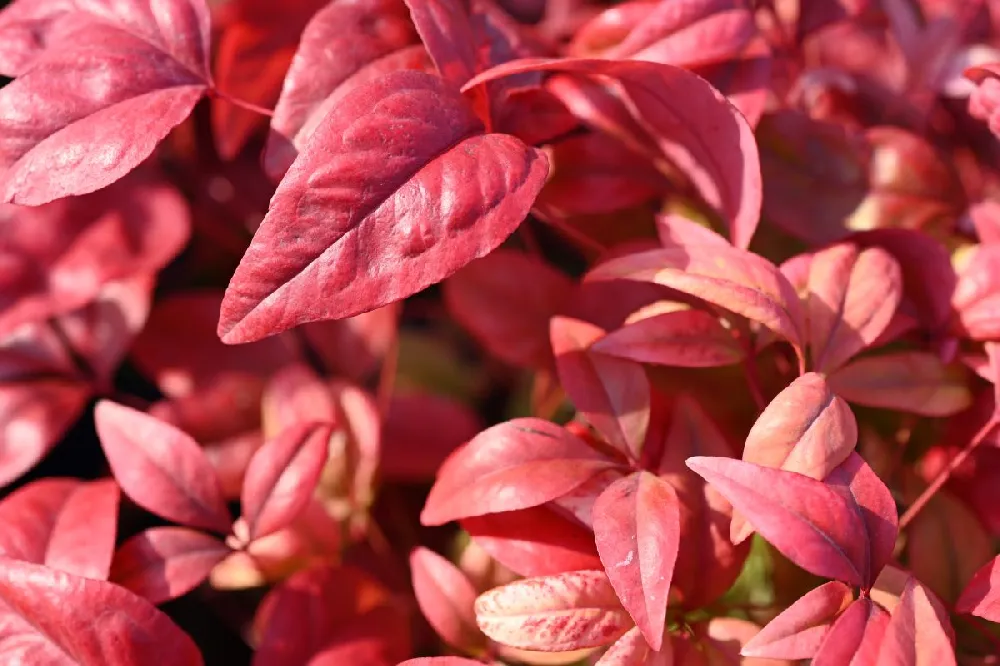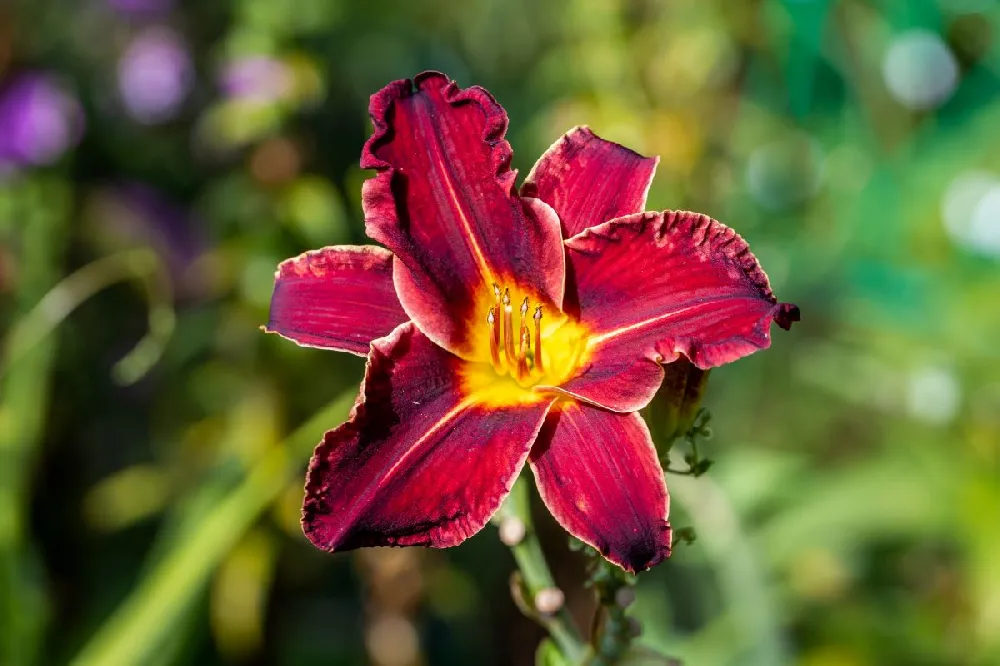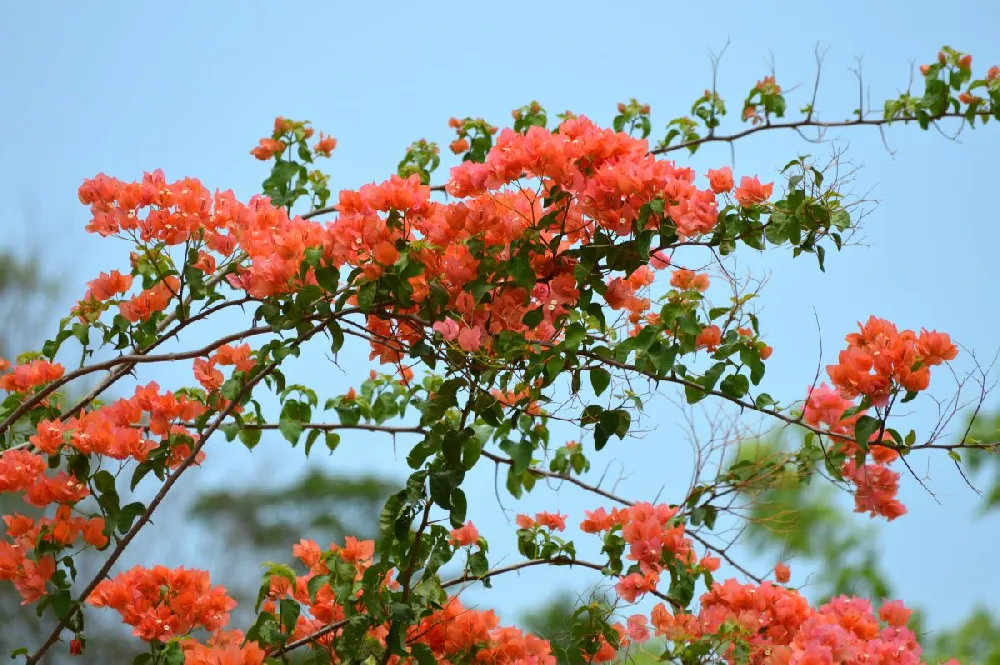- Home >
- Ornamental Plants >
- Johnny Jump Up Flowers
Johnny Jump Up Flowers for Sale - Buying & Growing Guide
Plant Care
Sunlight

Johnny jump ups will thrive in partial to full sun, 4 or more hours of direct light a day. They are happiest with morning sun and afternoon shade.
Watering
Water the seeds lightly every day after planting. Once you have mature plants, water once a week.
Fertilizing

A fertilizer with an NPK ratio of 15-2-20 is best for Johnny jump ups, or a balanced product designed for flowering plants.
This cheerful, tiny viola is easy to grow and adds a pop of yellow, white and purple to gardens as well as planters and window boxes. Johnny Jump-Ups are known by several different names including heart’s ease and wild pansies, and though pansies are much larger, the two are in the same family. They can be grown from seed and will self-propagate, and they thrive in both direct sunlight and partial shade. Other highlights include:
- They bloom early when the weather turns warm and continue to flower late into the fall.
- Pinching flowers off after they have bloomed encourages continued blooms.
- They’ll self-seed and come back each year when planted in the right environment.
Planting and Care
Planting instructions
Johnny Jump-Ups are welcome additions to flower beds and planters as long as they are planted in soil that has good drainage. Getting overly soggy can lead to an unhealthy plant. They do well in sunny locations, though plants grown in full sun may wilt in the middle of summer. They are happiest in partial shade, where they will thrive through the end of fall, especially if you take the time to pluck off spent blossoms. They make attractive plantings around the base of trees, and can be planted from a potted plant or from seeds nurtured indoors and transplanted outside.
To sow Johnny Jump-Up seeds indoors, plant the seeds two-to-three months before the last heavy frost is expected, planting seeds in a starting formula and covering them completely. Keep the soil moist and you will begin to see growth within two weeks, then provide them with several hours a day of light from either a grow light or a sunny window. Once the last heavy frost is past, harden seedlings by moving them to an outdoor area that is sheltered from wind and direct sunlight, covering them if frost is forecast. Once the plants have been hardened, they can be planted directly into well-drained soil, and once the fear of frost has completely passed seeds can be sown directly into the garden in rich soil that has been supplemented with compost or organic mulch. Seedlings should be thinned once they emerge.
To give potted Johnny Jump-Ups the best chance of transitioning into your garden, choose a cloudy day to plant them in your garden and keep plants 12 to 14 inches apart from each other, digging each plant a hole that is big enough to accommodate its root ball and watering well after planting.
Watering and nutrients
Once you have either planted a potted Johnny Jump-Up into your garden or sown its seeds, it should be kept relatively moist but not wet. Seeds should be well watered until they have germinated, but once plants are mature they only need to be watered once or twice a week.
Johnny Jump-Ups will benefit from a dose of a special pansy fertilizer with an NPK of 15-2-20 before setting them out. Amend the soil with compost after planting them outdoors.
Propagation
Once planted, Johnny Jump-Ups are known to self-seed and continue appearing year after year. They are grown from seeds, which can be started indoors under grow lights or in a sunny window. They can also be sown directly into a garden after the fear of frost has passed. To grow indoors, start several weeks before the arrival of spring weather. Seeds should be covered with about one-eighth inch of soil and kept moist. A heated germination mat will aid their growth.
To plant directly in the garden, wait until the last frost has passed and then sow seeds at least six inches apart, making sure to clear weeds out of the way. You can also sow seeds towards the end of summer or early fall to allow plants to get established in preparation for the following spring.
Because Johnny Jump-Ups are susceptible to a number of fungal diseases, it’s recommended that you pretreat them with fungicides as part of the propagation process.
Pruning
Johnny Jump-Ups are compact flowering plants that do not require pruning, but they do benefit from deadheading away blossoms that have already bloomed. Removing spent flowers will encourage additional flowers and extend your plant’s growing season. Many gardeners will sow the seeds from those flowers as they cut them off to ensure continuous growth and the emergence of new plants next season.
Pests, diseases, and animals
Johnny Jump-Ups are generally resistant to pests and diseases as long as they are planted in the right environment. If they are placed in ground that is too wet they may succumb to snails, slugs, mildew or fungus. To keep your plants healthy and protected from these problems, only water at the roots, early in the day so that the sun and heat can eliminate any excess moisture through the course of the day. If you find that a Johnny Jump-Up is severely affected by fungus, simply pull it out. If it is surrounded by other Johnny Jump-Ups they will fill in where the original plant was placed.
Soil
In its native environment, the Johnny Jump-Ups are typically found in neutral or acidic soil. Although they can thrive in a wide range of soil types, they prefer fertile soils that are high in organic matter. If your soil is of poor quality, then you could improve this by working in some well-rotted compost.
Remember, well-draining soil is required for these plants because they enjoy moisture but will not tolerate soggy soils. To improve drainage, you can add sand or grit to your soil, working it well before sowing or planting the Johnny Jump-Ups.
Lighting
The Johnny Jump-Up does well in a range of lighting environments; thus, the place where you plant them will depend on your local climate.
Keep in mind that these flowers love sunshine, but they tend to wilt in very hot climates. For this reason, if you are expecting soaring temperatures during the summer, it would be wise to plant these flowers in a spot where they have full sun in the morning and shade in the afternoon. Remember, afternoon shade will protect the plants from the sun when it is at its highest intensity. Plus, it can also prevent them from getting so hot that they wilt and die.
If you live in a cooler climate, you could plant these flowers in a position with full sun. They work well as border plants and look pretty in containers.
Temperature
The Johnny Jump-Up will survive in a wide range of temperatures; however, the climate will affect whether they are annual or perennial. In northern climates, they typically grow as annuals. In warmer climates, you will see them grow as perennials.
As perennials, these flowers tend to be short-lived. Even so, this is not a problem. This is because they self-seed easily to create new plants to replace the old ones. Aside from that, you can sow these flowers at almost any time of the year. Typically, the seeds are planted in the fall.
These plants will survive the frost in most locations, ready to bloom when spring arrives. Though these plants are fairly tolerant of cooler temperatures, they can encounter problems with excessive heat. Some gardeners find that their Johnny Jump-Ups are more tolerant of heat compared to pansies, which wilt quickly in a warm spell.
If you want to be sure that they will survive hot summers, it is advisable to plant them in partial shade. They will grow well under the partial shade of trees, and they should be positioned in a place where they are sheltered from the sun during the afternoon when its heat is at its most intense.
Flowers
Johnny Jump-Ups are grown for their pretty flowers with various colors. The flowers are solitary, and they appear on long stems rising high above their foliage. They can be two-tone, in violet and yellow, or tricolor in violet, yellow, and white. They have a very similar appearance to pansies but are notably smaller. Their smaller size gives them a cute and dainty look, which is popular among heritage and country-style gardens. The flowers are popular among bees and other pollinators.
FAQs
Is it true that Johnny Jump-Ups are edible?
Will Johnny Jump-Ups survive snowfall?
Johnny Jump-Ups can survive through the winter in milder climates, but they need to be covered if snow or frost is in the forecast. The best way to protect them is by providing plenty of mulch to insulate their roots. Plants grown in pots will not winter well, as the soil in pots does not provide the same insulation that the ground does.
Do Johnny Jump-Ups come in different colors?
Though Johnny Jump-Ups are most frequently dark purple, yellow and white, there are varieties in different colors, including lavender and white, solid lavender and yellow framed with burgundy.
